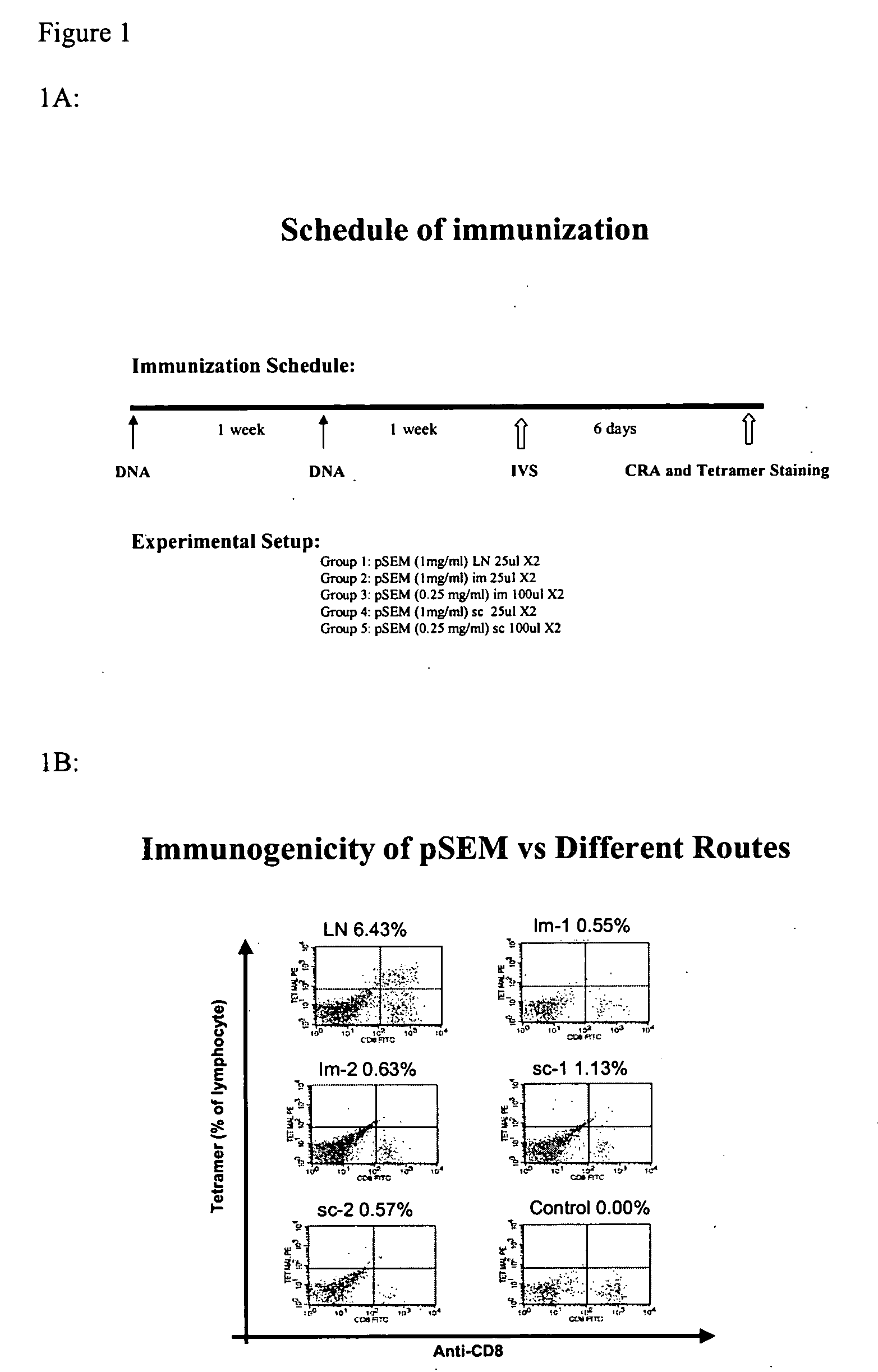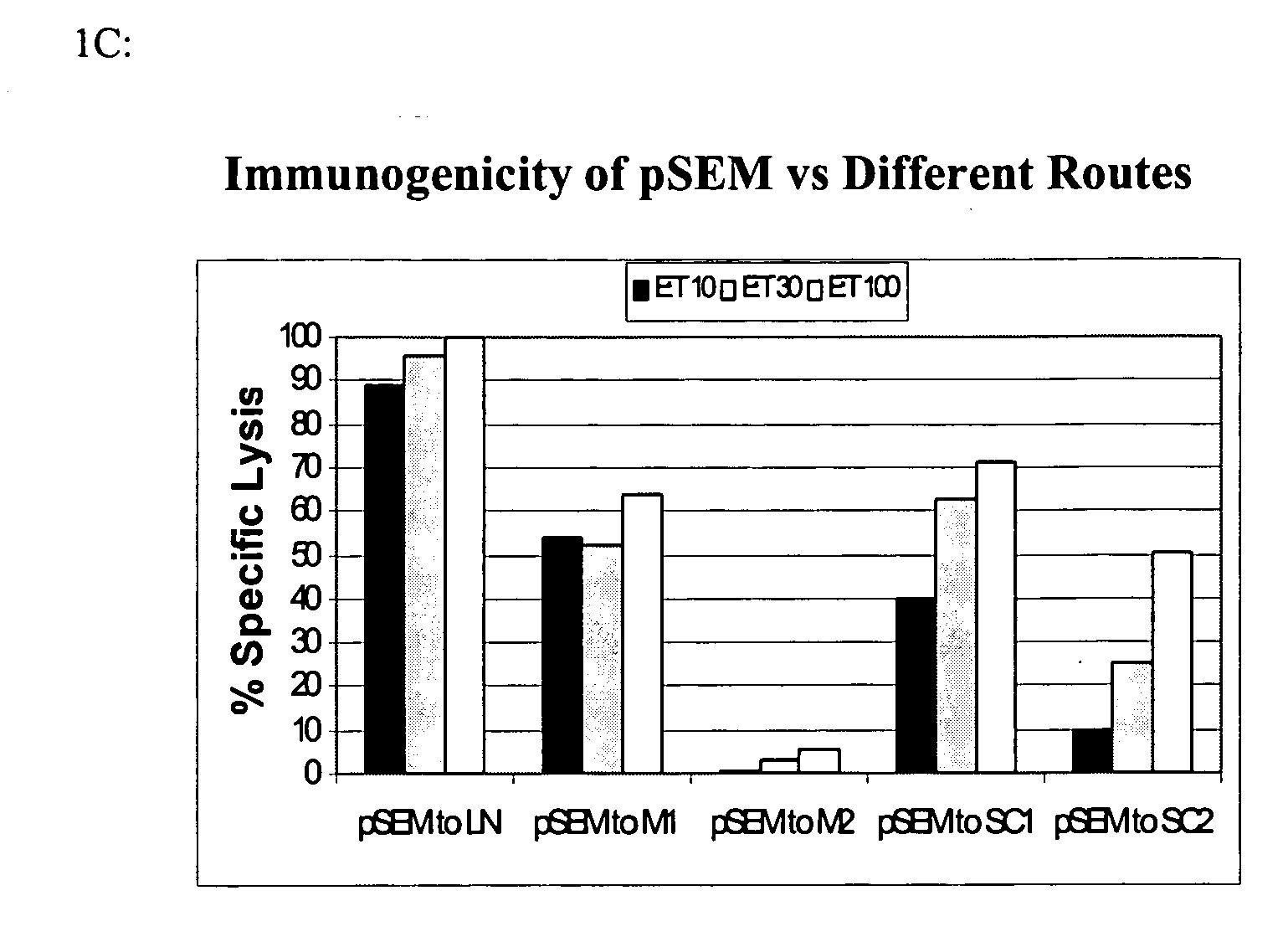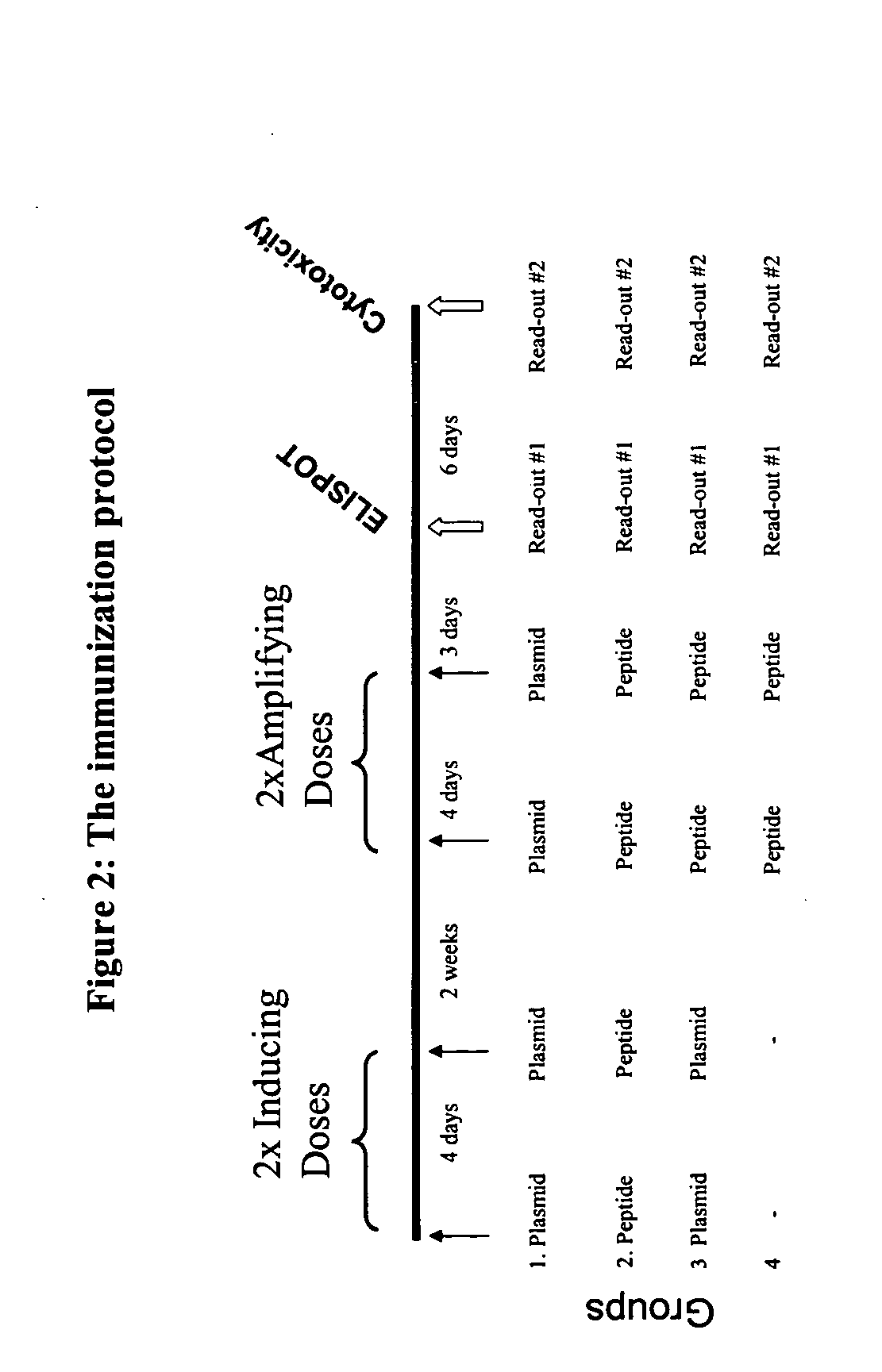Methods of elicit, enhance and sustain immune responses against MHC class I-restricted epitopes, for prophylactic or therapeutic purposes
a technology of restricted epitopes and immune responses, applied in the field of prophylactic or therapeutic purposes, can solve the problems of variable degree of unresponsiveness or “immune deviation", t cells do not respond to antigens in a free or soluble form, and achieve less immunosuppressive cytokine production, eliciting a response, and enhancing the effect of cytokine profil
- Summary
- Abstract
- Description
- Claims
- Application Information
AI Technical Summary
Benefits of technology
Problems solved by technology
Method used
Image
Examples
example 1
Highly Effective Induction of Immune Responses by Intra-Lymphatic Immunization
[0127] Mice carrying a transgene expressing a chimeric single-chain version of a human MHC class I (A*0201, designated “HHD”; see Pascolo et al. J. Exp. Med. 185(12):2043-51, 1997, which is hereby incorporated herein by reference in its entirety) were immunized by intranodal administration as follows. Five groups of mice (n=3) were immunized with plasmid expressing melan-A 26-35 A27L analogue (pSEM) for induction and amplified one week later, -by employing different injection routes: subcutaneous (sc), intramuscular (im) and intralymphatic (in, using direct inoculation into the inguinal lymph nodes). The schedule of immunization and dosage is shown in FIG. 1A. One week after the amplification, the mice were sacrificed; the splenocytes were prepared and stained using tagged anti-CD8 mAbs and tetramers recognizing melan-A 26-35 -specific T cell receptors. Representative data are shown in FIG. 1B: while subc...
example 2
Effects of the Order in Which Different Forms of Immunogen are Administered
[0128] HHD mice were immunized by intranodal administration of plasmid (pSEM) or peptide (Mel A; ELAGIGILTV; SEQ ID NO:1) in various sequences. The immunogenic polypeptide encoded by pSEM is disclosed in U.S. patent application Ser. No. 10 / 292,413 (Pub. No. 20030228634 A1) entitled EXPRESSION VECTORS ENCODING EPITOPES OF TARGET-ASSOCIATED ANTIGENS AND METHODS FOR THEIR DESIGN incorporated herein by reference in its entirety above.
[0129] The protocol of immunization (FIG. 2) comprised: [0130] i) Induction Phase / Inducing doses: bilateral injection into the inguinal lymph nodes of 25 μl (microliters) of sterile saline containing either 25 μg (micrograms) of plasmid or 50 μg (micrograms) of peptide, at day 0 and day 4. [0131] ii) Amplifying doses: as described above in Example 1 and initiated at 2 weeks after the completion of the induction phase.
[0132] The immune response was measured by standard techniques, ...
example 3
ELISPOT Analysis of Mice Immunized as Described in Example 2
[0133] ELISPOT analysis measures the frequency of cytokine-producing, peptide-specific, T cells. FIG. 3 presents representative examples in duplicates; and FIG. 4 presents a summary of data expressed individually as number of cytokine producing cells / 106 responder cells. The results show that, in contrast to mice immunized with peptide, plasmid-immunized or plasmid-entrained / peptide-amplified mice developed elevated frequencies of IFN-γ (gamma)-producing T cells recognizing the melan-A peptide. Four out of four mice, entrained with plasmid and amplified with peptide, displayed frequencies in excess of 1 / 2000. In contrast, two out of four mice immunized throughout the protocol with plasmid, displayed frequencies in excess of 1 / 2000. None of the mice using only peptide as an immunogen mounted elevated response consisting in IFN-γ-producing T cells. Indeed, repeated administration of peptide diminished the frequency of such c...
PUM
| Property | Measurement | Unit |
|---|---|---|
| Time | aaaaa | aaaaa |
| Time | aaaaa | aaaaa |
| Immunostimulation | aaaaa | aaaaa |
Abstract
Description
Claims
Application Information
 Login to View More
Login to View More - R&D
- Intellectual Property
- Life Sciences
- Materials
- Tech Scout
- Unparalleled Data Quality
- Higher Quality Content
- 60% Fewer Hallucinations
Browse by: Latest US Patents, China's latest patents, Technical Efficacy Thesaurus, Application Domain, Technology Topic, Popular Technical Reports.
© 2025 PatSnap. All rights reserved.Legal|Privacy policy|Modern Slavery Act Transparency Statement|Sitemap|About US| Contact US: help@patsnap.com



